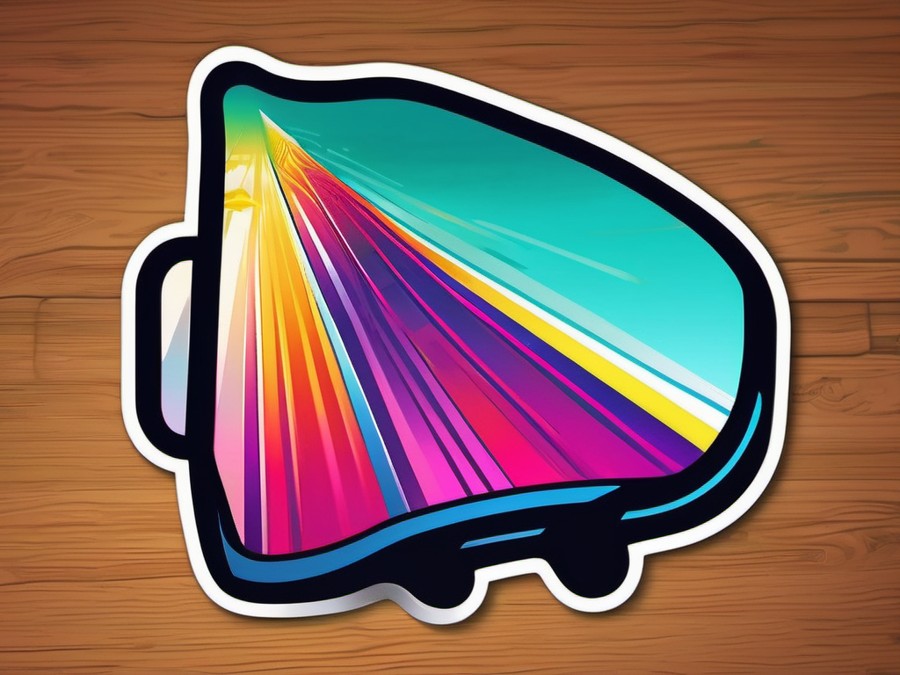· Charlotte Will · Cleaning & Repair · 8 min read
What is the Best Method for Removing Mold from Walls?
Learn the best methods for removing mold from walls, including DIY techniques and when to hire professionals. Discover how to prevent and detect mold growth for a healthier home environment.

Removing mold from walls can be a challenging task, but it’s crucial for maintaining a healthy and safe living environment. Understanding the types of mold, their causes, and effective removal methods is key to tackling this issue. In this comprehensive guide, we’ll explore the best methods for removing mold from walls, whether you choose to do it yourself or hire a professional.
Understanding Wall Mold: Types and Causes
Common Types of Wall Mold
Molds come in various types, each with its own characteristics and potential health risks. Some of the most common ones include:
- Mildew: Typically appears as a white or gray powdery substance.
- Stachybotrys chartarum (black mold): Known for its black, slimy texture and strong musty odor.
- Aspergillus: This mold type can appear in various colors and is commonly found indoors.
- Penicillium: Often blue or green in color, this mold is known for its strong odor.
- Cladosporium: A black or green mold that can trigger allergic reactions in sensitive individuals.
Factors Contributing to Wall Mold Growth
Several factors contribute to the growth of mold on walls, including:
- High humidity: Elevated moisture levels in the air can foster mold growth.
- Poor ventilation: Insufficient airflow allows moisture to accumulate, creating ideal conditions for mold.
- Water leaks and damage: Leaks from pipes, roofs, or windows can lead to wet walls that are prone to mold.
- Organic materials in walls: Walls with organic components like paper, wood, or drywall provide food sources for mold.
Why Removing Mold from Walls is Crucial
Health Implications of Wall Mold
Exposure to mold can have serious health consequences, ranging from allergic reactions to more severe issues. Some common symptoms include:
- Allergic reactions: Sneezing, itchy eyes, and skin rashes.
- Respiratory issues: Coughing, wheezing, and shortness of breath.
- Neurological symptoms: Headaches, dizziness, and fatigue.
Structural Damage from Wall Mold
Mold not only affects your health but also the structural integrity of your home. Prolonged mold growth can:
- Weaken walls and foundations: Mold feeds on the organic materials in your walls, causing them to deteriorate over time.
- Compromise structural integrity: The weakening of walls can lead to cracks, leaks, and even collapse in severe cases.
DIY Methods for Removing Mold from Walls
Natural Remedies for Wall Mold Removal
If you prefer a more natural approach, there are several effective remedies to consider:
- Vinegar solution: Mix equal parts of white vinegar and water in a spray bottle.
- Baking soda and water paste: Create a thick paste by combining 1/2 cup of baking soda with a few tablespoons of water.
- Hydrogen peroxide: Use 3% hydrogen peroxide directly on the affected area.
Steps for Effective DIY Wall Mold Removal
Follow these steps to effectively remove mold from your walls:
- Preparation: Gather supplies including protective gear like gloves, masks, and goggles.
- Containment: Isolate the affected area to prevent mold spores from spreading to other parts of your home.
- Cleaning: Apply your chosen cleaning solution directly onto the mold and let it sit for a few minutes. Scrub gently to remove the mold without damaging the surface.
- Removal: Use a wet/dry vacuum or damp cloth to remove any mold residue.
- Disposal: Properly dispose of contaminated materials in sealed bags to prevent further spread.
Professional Mold Remediation Services
When to Call a Professional
While DIY methods can be effective for small mold issues, there are times when professional help is necessary:
- Extensive mold growth (over 10 square feet): Large areas require specialized equipment and expertise.
- Mold in sensitive areas (e.g., HVAC systems, attics): These locations are difficult to access and may require specialized techniques.
- Recurring mold issues: Persistent mold problems indicate an underlying issue that needs professional assessment.
Steps Professionals Take for Mold Removal
Professional mold remediation services follow a systematic approach to ensure thorough removal and prevent recurrence:
- Inspection and testing: They inspect the affected area and may conduct tests to determine the type of mold present.
- Containment and isolation: Professionals use advanced techniques to contain the mold, preventing spores from spreading.
- Air filtration: High-efficiency air filters are used to capture mold spores and improve indoor air quality.
- Removal of affected materials: Damaged drywall, insulation, and other materials are carefully removed.
- Cleaning and sanitization: Surfaces are thoroughly cleaned to remove any remaining mold residue.
- Restoration: Professionals restore the affected area to its original condition, often including repainting or replacing damaged materials.
Preventing Mold Growth on Walls
Controlling Humidity Levels
Maintaining optimal humidity levels is crucial for preventing mold growth:
- Use dehumidifiers: These devices help control moisture levels in your home.
- Improve ventilation: Proper airflow prevents the accumulation of moisture.
- Fix leaks promptly: Address any water leaks from pipes, roofs, or windows immediately.
Proper Ventilation Techniques
Effective ventilation is key to keeping your walls mold-free:
- Regularly open windows: This allows fresh air to circulate and removes excess moisture.
- Use exhaust fans in bathrooms and kitchens: These fans help remove steam and odors, preventing mold growth.
- Install ventilation systems in attics and crawl spaces: Proper ventilation in these areas prevents moisture buildup.
Common Misconceptions About Wall Mold Removal
Bleach as a Mold Killer
Many people believe that bleach is an effective mold killer. However:
- Ineffective on porous surfaces: Bleach can’t penetrate deep into porous materials like drywall.
- Can cause further damage: Bleach can discolor and weaken surfaces, making the problem worse.
Painting Over Mold
It might seem like a quick fix, but painting over mold is not recommended:
- Temporary solution: Paint can hide the mold but does not address the root cause.
- Can lead to recurring issues: The mold will likely return if the underlying moisture problem is not resolved.
Addressing Different Types of Walls
Removing Mold from Drywall
Drywall presents unique challenges due to its porous nature:
- Special considerations for porous surfaces: Use solutions that can penetrate and kill mold within the drywall.
- Proper disposal of affected drywall: Remove and dispose of contaminated drywall to prevent further spread.
Removing Mold from Brick Walls
Brick walls require specialized attention:
- Effective cleaning solutions for brick materials: Choose solutions that are safe and effective on masonry.
- Special attention to mortar joints: Mold can often grow in the mortar between bricks, requiring thorough cleaning.
Real-Life Stories: Dealing with Wall Mold
A Homeowner’s Battle with Wall Mold
One homeowner found mold growing in their basement:
- Initial attempts to remove it: They tried cleaning the walls with bleach but found the mold kept returning.
- Lessons learned: They discovered that addressing the moisture source was key to preventing mold growth.
- Professional intervention: Ultimately, they hired a professional who fixed a leaky pipe and ensured proper ventilation.
A Renter’s Dilemma with Wall Mold
Another individual struggled with mold in their rented apartment:
- Struggles with landlord communication: They had difficulty convincing their landlord to address the mold issue.
- Temporary solutions for mold removal: They used homemade remedies and fans to keep the mold at bay.
- Long-term implications: They eventually moved out due to health concerns related to mold exposure.
The Importance of Regular Wall Inspections
Visual Inspections for Early Detection
Regularly checking your walls can help catch mold growth early:
- Checking for visible mold growth: Look for signs of discoloration or musty odors.
- Look for signs of water damage or moisture: Address any wet spots or leaks immediately.
Professional Inspections for Comprehensive Assessment
For a more thorough assessment, consider hiring a professional:
- Thorough inspection by mold specialists: Professionals can identify hidden mold and assess the extent of the problem.
- Recommendations for prevention and remediation: They provide tailored advice on how to prevent future mold growth.
Choosing the Right Cleaning Solutions
Water-Based vs. Oil-Based Solutions
The type of cleaning solution you choose can affect its effectiveness:
- Effectiveness on different surfaces: Water-based solutions are generally safer and more effective on various surfaces.
- Environmental considerations: Water-based solutions are often more eco-friendly.
Homemade vs. Commercial Cleaning Solutions
Both homemade and commercial solutions have their pros and cons:
- Cost comparison: Homemade solutions are typically cheaper but may require more effort to prepare.
- Accessibility and convenience: Commercial solutions are readily available but can be more expensive.
Safety Precautions When Removing Wall Mold
Personal Protective Equipment (PPE)
Protecting yourself is crucial during mold removal:
- Gloves, masks, and goggles: Wear appropriate protective gear to minimize exposure to mold spores.
- Proper disposal of contaminated PPE: Safely dispose of any used protective equipment to prevent further spread.
Working in Confined Spaces
When working in tight areas, take extra precautions:
- Ventilation strategies: Ensure proper airflow to prevent the accumulation of mold spores.
- Safety measures for tight areas: Use specialized equipment and techniques to safely remove mold in confined spaces.
Conclusion
Removing mold from walls is an essential task for maintaining a healthy living environment. Whether you choose to tackle the problem yourself or hire a professional, understanding the intricacies of mold removal is key. By following the outlined methods and taking preventive measures, you can effectively eliminate mold and safeguard your home against future growth.
FAQs
What should I do if I suspect there is mold growing in the walls of my home?
- Conduct a thorough visual inspection and consider hiring a professional for a more comprehensive assessment.
How can I tell if the mold on my walls is toxic?
- While it’s difficult to determine toxicity without testing, certain types like black mold (Stachybotrys chartarum) are generally considered more harmful.
Is it safe to paint over mold on walls?
- Painting over mold is not recommended as it does not address the root cause and can lead to recurring issues.
What are some natural ways to prevent mold growth on walls?
- Controlling humidity levels, improving ventilation, and using natural cleaning solutions can help prevent mold growth.
When should I consider hiring a professional for wall mold removal?
- It’s best to call a professional if the mold growth is extensive, in sensitive areas, or if you’re experiencing recurring issues.
Internal Links:




